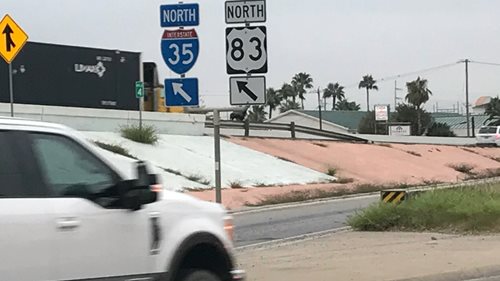
The human quest to travel has been an evolutionary tale of how far, fast, and efficiently we can travel from one place to another. In the trucking industry, we are generally interested in ground travel. I enjoy looking at how our current roadways started out as networks of paths that grew all the way into the interstate system we enjoy today.
Some of the earliest dirt paths turned into extensive networks which continually evolved during the history of mankind. Improved roadways have enabled the movement of commerce, travel, as well as armies. Early roads/paths often followed the animal population or their migration routes.
In the beginning, road building was generally created out of a need or improved upon as the need arose to get around a swamp, over a mountain, or across a body of water. As mankind moved towards wheeled transport to increase their productivity and efficiency the need for improvement was exacerbated. There are many places that a human or animal can walk and yet a wheeled cart could not traverse the same path successfully. At the very least these trails need to be widened as a cart is wider than a human being.
The next area of improvement was paving. This was first evidenced on the Harappan roads. The roads in the towns where planned, straight, long, and intersected each other at right angles. Jumping ahead to the Roman Empire there was a great need to move armies rapidly from one area to another. The clay soils in the region would often get muddy and bog down the movement of their legions of soldiers. These roads were made of crushed stone, which allowed for drainage keeping the soldiers from becoming bogged down. Also interesting is that farm roads were in many cases the first to be paved. The farm roads were improved in order to keep produce clean and to keep the growing population better fed. The point being here is that roadways have always been in a constant flux of improvement to meet the needs of the human population.
Let’s jump to the United States history of the earliest travel areas which typically followed Indian trading routes. Railroad routes often followed these long-established pathways. One of the first organized road systems to cross state lines and travel long were the auto trails. The auto trails rein as the premier route of travel was historically short-lived. The auto trails were funded in many different ways to promote long distance motorized travel. Funding came from private investors, tolls, municipalities, and various forms of government. The next advancement in our country was the numbered US routes. First came trails, they Auto trails, National highways in 1926, followed by Interstate Highway System in 1956, which linked our nation together, and now what is next?
Who can imagine what will happen next? US highways are still there, many of the auto trails are still in use today, which leads to the question will there be a highway system to take the pressure off of our current interstate system we use today?
Click here for a link to one person’s view of the future from 1958 which is only two years after the inception of the interstate system. Magic Highways USA 1958
The Lincoln Highway https://en.wikipedia.org/wiki/Lincoln_Highway